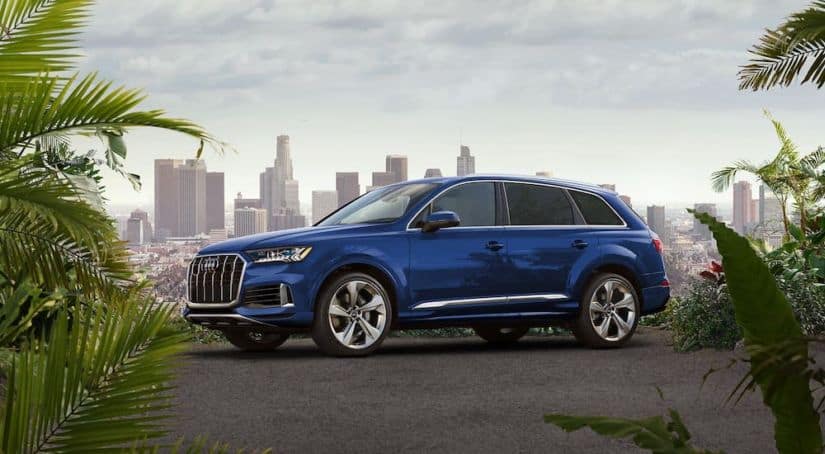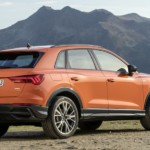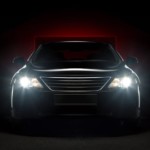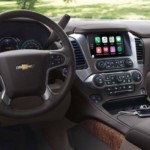Audi is the youngest of the big three German luxury brands. Although the name Audi first appeared in 1910, that original Audi was subsumed in the 1932 merger of Audi, Wanderer, Horch, and DKW into Auto Union and disappeared from the market in 1939. Incidentally, it is this merger that is commemorated by the four interlinked rings in the modern Audi emblem. Audi did not reappear as an automobile brand until 1965 when it was resurrected after Volkswagen purchased Auto Union. However, while the products from this new Audi were fairly popular, they did not stand out from those of the better-established Mercedes and BMW. This changed with the 1980 introduction of the Audi Quattro all-wheel drive rally car. The combination of German sporty luxury and advanced all-wheel drive made Audi a success story and resulted in the company that we are familiar with today.
Quattro AWD
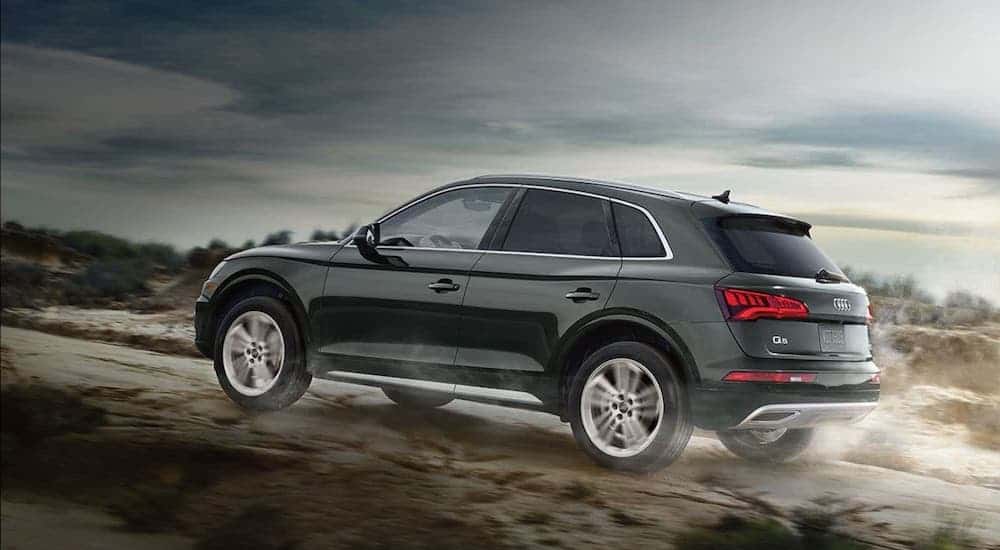
Audi did not invent all-wheel drive and was not even the first to mass-produce an all-wheel drive vehicle. However, Audi was the first to build an all-wheel drive performance vehicle. This development stemmed from the realization that being able to apply power through all four wheels would more than compensate for the additional weight of an all-wheel drive system, and allow the Audi to out-accelerate its opponents on slippery surfaces. The introduction of the Audi Quattro and its subsequent impressive performance in rally racing proved this theory correct and upended the idea that fast cars had to be rear-wheel drive. This success of the Quattro all-wheel drive system meant that it soon found its way into Audi’s luxury sport sedans as well as its rally cars, and gave Audi its distinctive selling point over its Mercedes and BMW competitors.
Today, the Quattro system has gone through several generations. The original design relied on a locking center differential that split power 50/50 between the front and rear axles. Although this was a vast improvement over rear-wheel drive cars, it still meant that a lot of your power was wasted if you lost traction on one set of wheels. In 1988 Audi introduced the second generation of Quattro, which solved this problem by replacing the locking differential with a mechanical Torsen differential. Although under normal conditions, the Torsen differential still splits power evenly, if one set of wheels loses traction, it will send up to 80% of its power to the wheels that still have grip. Since then, Audi has continued improving on its Quattro system, and its highest-performance models now have incredibly sophisticated computer-controlled systems, but the fundamental principle of Quattro remains the same.
Advanced Features
Since the development of the original Audi Quattro system, advanced technology has always been a part of the Audi spirit, and today all of Audi’s vehicles are filled with advanced technology to make for a safer and more comfortable driving experience. Even the entry-level Audi A3 is available with a wide array of technology from Audi’s virtual cockpit to Audi’s MMI touch infotainment system with handwriting recognition. The Audi virtual cockpit is a particularly impressive 12.3” fully-digital instrument cluster that can be reconfigured on the fly to show critical vehicle information or to display a full-size digital map that is larger and higher resolution than many manufacturers’ infotainment screen.
Audi has not fallen behind in the development of advanced safety technologies, either. Not only does every Audi vehicle offer the standard automatic emergency braking for automobiles and pedestrians, blind zone and rear cross-traffic warnings, lane-keep assist, and adaptive cruise control, they also have automatic park assist for both perpendicular and parallel parking spaces. However, Audi’s most impressive safety feature is “pre sense.” This system will detect an imminent front or rear collision and respond by tightening seat belts, repositioning seats to best absorb shock, and closing the side windows and sunroof to prevent injury from flying debris. Altogether, Audi automobiles remain at the cutting edge when it comes to providing ultimate safety, comfort, and performance.
The Audi Lineup
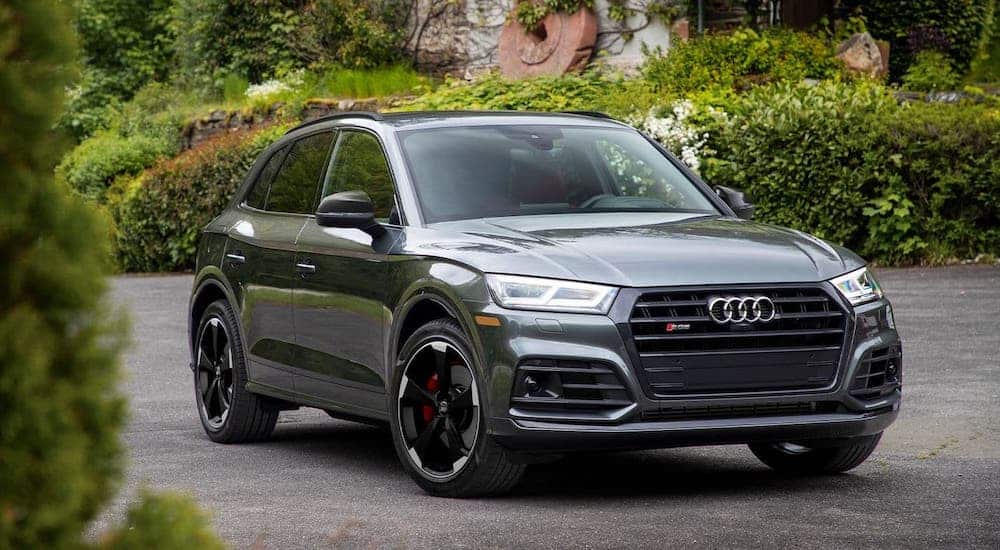
Today, Audi offers a full line of vehicles that includes SUVs, sports cars, hybrids, and even an all-electric vehicle. All Audi models have a letter/number designation that allows you to easily understand their place in the product line. Higher numbers always mean larger or more powerful vehicles, with the entry-level cars starting with a 3 and the most expensive ending with an 8. Sedans, hatchbacks, and convertibles all have an “A” for the base model, an “S” for the sport model, an “RS” for the racing-oriented variants, and only an “R” for the pure performance cars. Therefore, the most basic car Audi sells is the Audi A3, while the highest-performance is the Audi R8. SUVs follow similar rules, except they have a “Q” for the base model instead of an “A.” The only exception to these rules is the Audi TT, a small 2+2 coupe that does not fit into the smooth progression of the rest of the Audi product line.
Currently, Audi’s most popular model is the Audi Q5 midsize SUV, with over 67,000 sold in 2019. This two-row vehicle makes for an excellent all-around platform with 248 horsepower, 53 cubic feet of cargo space, and of course, the Quattro all-wheel drive system for surefooted handling in poor conditions. In the sporty SQ5 variant, engine output is boosted to 349 horsepower, which gives this SUV acceleration rivaling some sports cars. And for drivers preferring efficiency to thrills, the Audi A5 is also offered as a plug-in hybrid that can travel 20 miles on battery power alone or achieve an average of 27 MPG when the gasoline engine is running. With capabilities such as these on top of the standard Audi fit of advanced technology and luxury materials, it is no surprise that so many drivers have opted for the Audi Q5.
The next most popular Audi model is another SUV – the larger Audi Q7, which had sales of nearly 35,000 in 2019. This is followed by the more traditional midsize Audi A4 and Audi A5 cars at third and fourth place, with around 34,000 and 26,000 sold. Available as sedans and coupes, these sporty Quattro-equipped cars used to be Audi’s bread and butter and still offer an excellent driving experience for people who do not need the extra space offered by an SUV. Ranging from 188 horsepower in the base Audi A4 all the way up to 444 horsepower in the Audi RS5, there is a variant of these vehicles that will suit every driver. And for those who need a bit more room but do not want to give up sport sedan handling, there is the Audi A4 Allroad wagon with its over 58 cubic feet of cargo space.
However, perhaps the most interesting vehicle in the Audi lineup is the Audi e-Tron. Introduced for 2019, this battery-powered SUV offers 204 miles of range without recharging and can generate 402 horsepower. Most notably, it can recharge 54 miles of range in 10 minutes from a high-speed charge. When combined with typical Audi advanced technology and luxury design, the Audi e-Tron gives Tesla a run for its money when it comes to luxury electric vehicles. And for 2020, the Audi e-Tron Sportback has been introduced with a more car-like profile and slightly better range.
Audi: Impressive and Modern
Whether it be their all-wheel drive system, infotainment, safety, or power, Audi is always reaching to impress. From the beginning until now, Audi has stayed ahead of the game with technology and features, which is why it is notably a luxury brand. So if you are looking for luxury, Audi is certainly the way to go.
